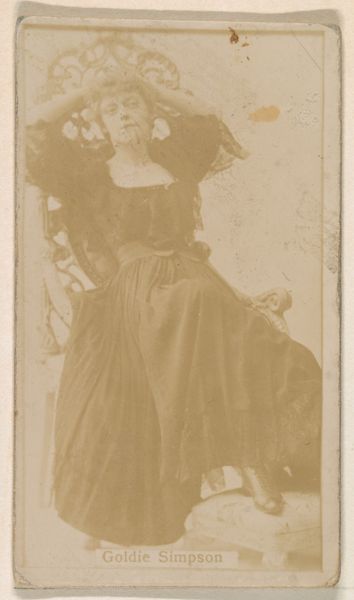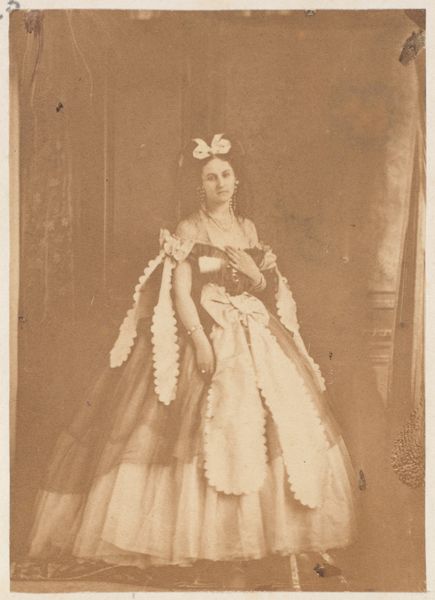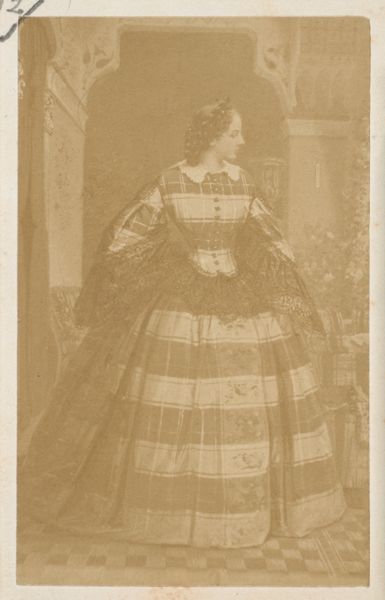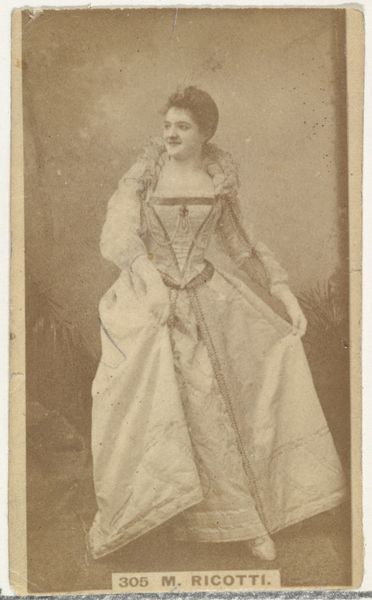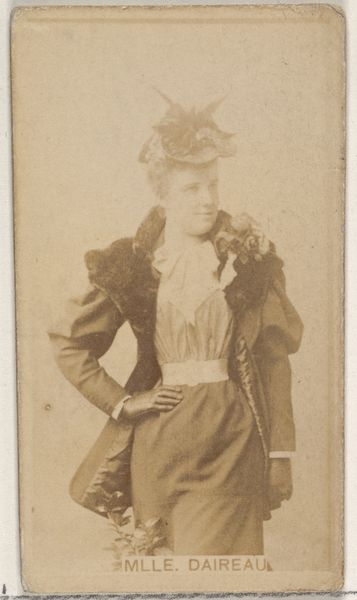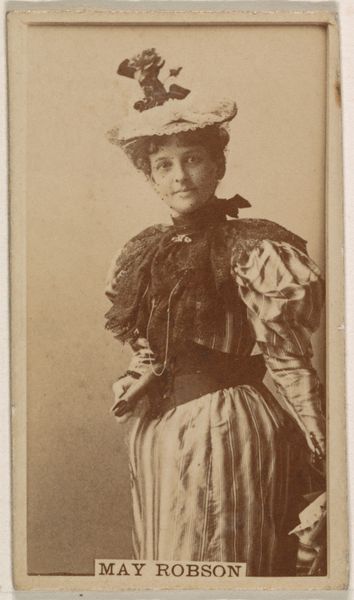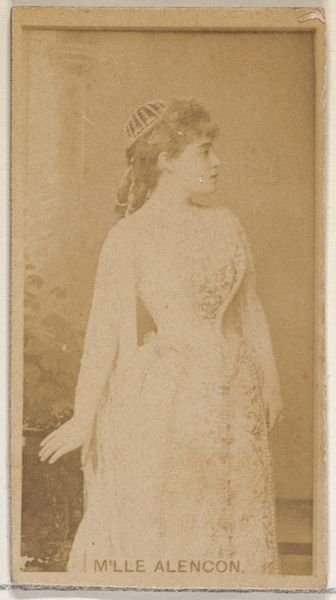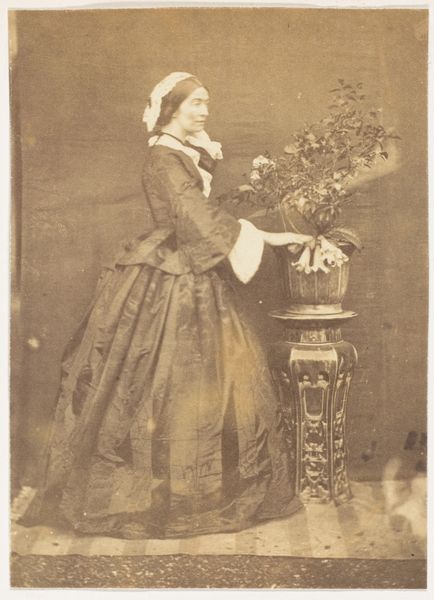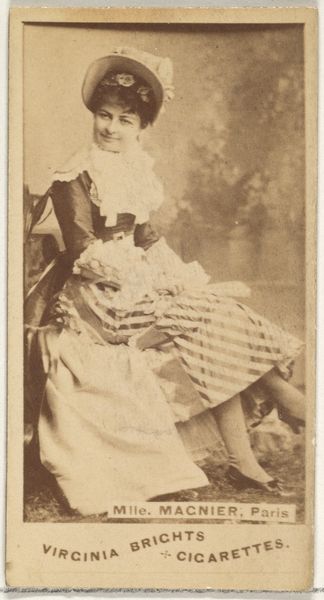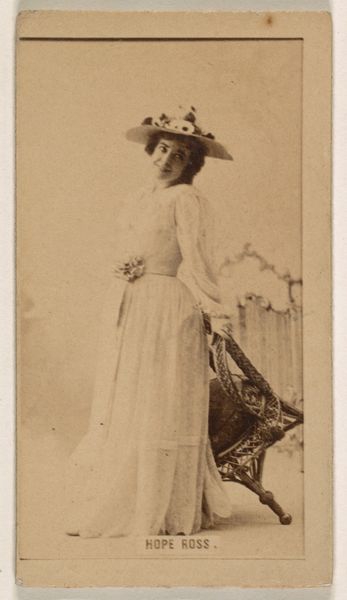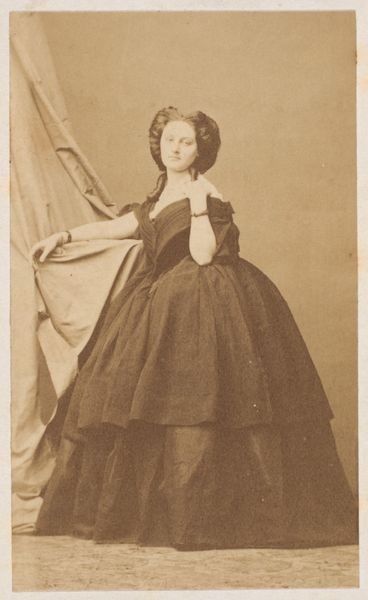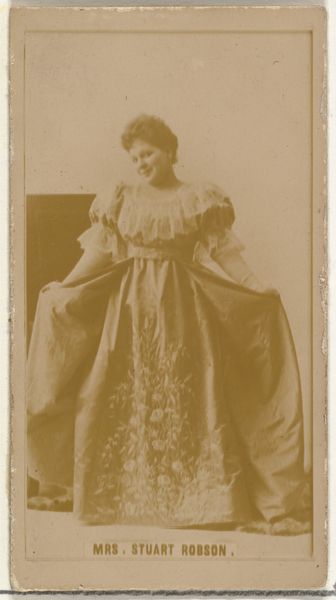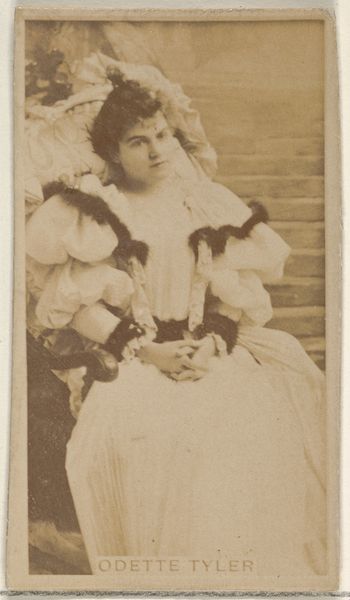
Dimensions: 5.1 x 8.6 cm. (2 x 3 3/8 in.)
Copyright: Public Domain
Curator: "Le deux roses", by André-Adolphe-Eugène Disdéri. It's an albumen print from the 1860s, part of the Metropolitan Museum of Art's collection. What are your initial thoughts? Editor: The photograph feels like a quiet, faded dream. A sort of Romantic elegy, maybe? The sepia tone adds this veil of distance and melancholy. The woman herself looks pensive, almost trapped in time. Curator: Trapped perhaps by the rigid conventions of Romanticism? Look at how Disdéri balances her figure within the composition, setting off this fashionable form against this misty background. Note how the very albumen print itself embodies Romanticism's search for beauty tinged with transience, reflecting both clarity and decay. Editor: You see form, and I see feeling! Her gaze downward, her stillness – it conveys this powerful sense of internal life, despite her decorative trapping. Does the stiffness not hint that women were corseted both physically and metaphorically? That gown is, like, eating her alive. Curator: The materiality is paramount. Albumen printing would capture light and shadow in very specific ways, and so, the soft gradations create this aura of delicacy—yet look closer, and you will notice the subtle semiotic codes interwoven here. Her attire indicates the rising middle class seeking portraiture to declare its presence. And do you not feel the structural balance echoing classicist aesthetics? Editor: Structural balance…Okay, but that big floppy hat and delicate parasol? Totally shielding her face from any harsh light, any direct gaze! I get this vibe of protection, but also fragility. The photograph feels so deliberately composed, the perfect pose for the perfect lady. Like she is another rose amidst all those surrounding blooms. Curator: I think you might be drawn toward sentimentality. See, there is precision, too: albumen allowed multiple prints from a single negative; so it could capture reality as commodity. We can trace economic narratives through aesthetic codes like the careful arrangement of flowers, fabrics and props. Editor: Mmm, maybe! It is just hard not to project all sorts of feelings. But it also feels cool that after over 150 years this image, this moment, survives – inviting all our personal baggage, right? Curator: Yes, precisely—through semiotic analysis we acknowledge context, reception and historical perspectives...a vital perspective, to be sure.
Comments
No comments
Be the first to comment and join the conversation on the ultimate creative platform.
